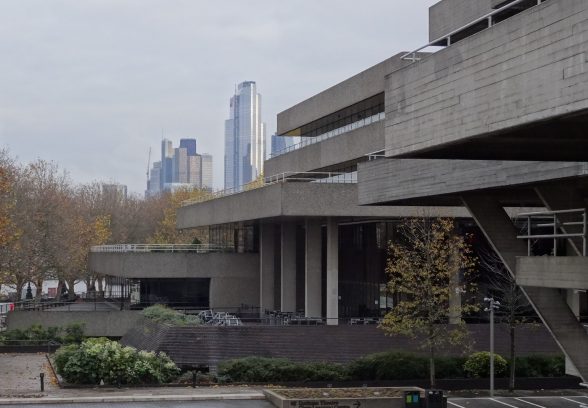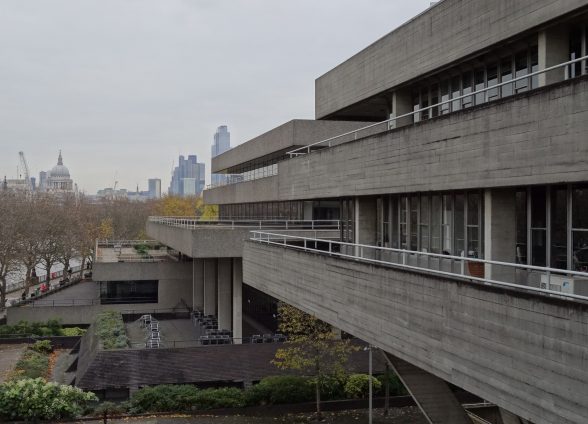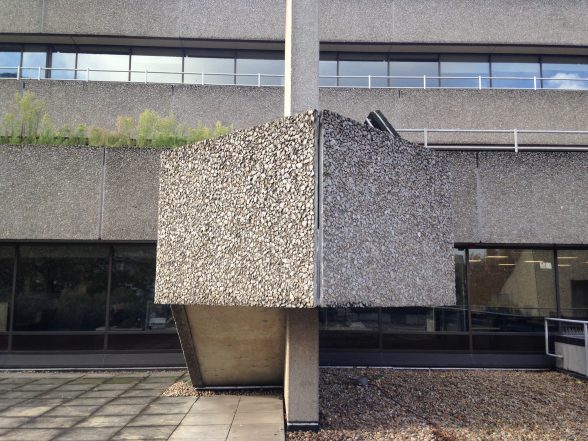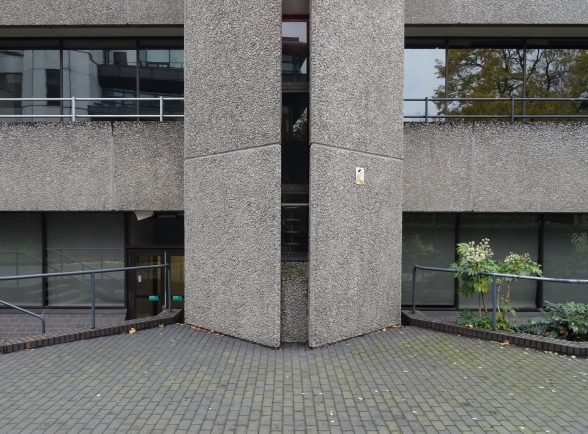This website uses cookies
This website uses cookies to enable it to function properly and to analyse how the website is used. Please click 'Close' to accept and continue using the website.




News Flash 8.2.21 – C20 Director Catherine Croft has responded to AHMM’s ‘all new vision’ for the IBM building with the following comment: “The C20 Society Casework Committee will be looking at the revised scheme on Feb 15th. We have had initial sight of the changes to the scheme, and appreciate that the team has responded positively to some of our concerns. However we still feel that the roof extension would have a damaging impact both on the IBM building itself and on the overall composition of the IBM and National Theatre as a pair. We are not calling for a scheme which makes no alterations to IBM, there is definitely scope for some changes, not least to address the fact that vehicle access to both IBM and National Theatre has radically changed since original construction, and the South Bank walkway has become a major public venue in its own right.”
News Flash 29.9.20 – GOOD NEWS: This application has now been formally withdrawn. A rethink is very much welcomed by C20 Society, and we await with interest a revised scheme. However, we remain concerned that the scale of revisions envisaged may not be sufficiently extensive to protect the listed building. A statement by architects AHMM says that they are “taking this opportunity to further refine [their] design to address particular points”, whereas we feel a wholesale redesign is called for. We remain willing to discuss a suitable approach with the developer, AHMM and other interested parties.
We are extremely disappointed that only minor amendments have been made to the ‘heavy handed’ plans to redevelop Sir Denys Lasdun’s IBM building on London’s South Bank despite its recent listing at Grade II.
We considered the revisions to the proposals at this month’s Casework Committee and concluded that ‘the minor amendments submitted entirely fail to respond to the listing of the building. We re-iterated our strong objections to the plans from AHMM architects, saying they would cause substantial harm to the Grade II listed IBM building, severely compromise its relationship with, and the setting of, the Grade II* listed National Theatre, and damage the character of the South Bank Conservation Area.

Photo: Thaddeus Zupancic 2019
In a letter of objection to the London Borough of Lambeth, Head of C20 Society Casework Clare Price said: “Clearly this recognition of the nationally important status of the building should have promoted a complete reconsideration of the building. As a nationally listed building, the building now falls within the remit of Planning (Listed Buildings and Conservation Areas) Act 1990 which, with the companion paragraphs of the NPPF (2019), presumes against harm to the significance of heritage assets so designated. The requirement that developments should be sympathetic and not cause harm is mirrored in both the London Plan 2016 and Lambeth’ Local Plan of 2015. Unfortunately, the revised proposals fail to consider the requirements of the legislation. In the opinion of the Society, the overwhelming massing changes will not only cause substantial harm to the carefully considered form of the listed building, the addition of extra accommodation to the building will cause an imbalance in its critically important relationship to the National Theatre with which it has a subservient but inseparable role. The alterations to the brick plinth to incorporate retail units will fundamentally alter the building’s relationship with Queen’s Walk. The Society considers the loss of original fabric contemplated in this application to be incompatible with a sensitive approach to altering a listed building.

“The Society’s response to pre-application consultation criticised the heavy-handed approach of the proposals and the lack of regard for preserving design features of the IBM building that Lasdun crafted to create a harmonious and respectful relationship between it and the National Theatre. Not only were these comments disregarded when the application was submitted, they continue to be disregarded now, despite the recognition of the national heritage significance of the building through its designation. The Society is therefore extremely disappointed that this opportunity to reframe the proposals in the light of listing has not resulted in a more thoughtful and considered scheme. The Society re-iterates its strong objections to the oversized extension to the IBM building and urges that the application be withdrawn and re-considered from a conservation-led perspective. Improving the efficiency of the existing building is not only possible and desirable, it is the most appropriate route to ensuring that the significance of this building is recognised and modifications undertaken appropriately.”
The National Theatre is of a similar view that the revisions to the development plans are “relatively modest”, despite the Grade II listing, and re-iterate its strong objections to the scheme.

Photo Thaddeus Zupancic 2019
The IBM building (originally the firm’s Marketing Centre) was designed and built (1980-83) primarily with its relationship to the National Theatre (1969-76) in mind. The NT was originally conceived as one of a pair of buildings, and the IBM building can be considered a ‘ghost’ of the Opera House that was never built.
The IBM building is a deliberately subservient neighbour to the National Theatre, and views of the two buildings from the Thames, northern embankment and Waterloo Bridge best display the pair’s relationship and combined sculptural quality. Archival information reveals that Lasdun particularly focused on the composition of the scale of NT and IBM as one form, comparing it to Somerset House across the river. The height of the IBM building office floors was deliberately limited to sit around the same height as the roof of the NT’s terraces, creating a plinth upon which the plant enclosures and fly towers stand as statements in the skyline.
Lasdun was a greatly celebrated architect working in the post-war period whose skill was applied to a broad variety of projects across the UK and occasionally in Europe, including schools, higher education campuses, commercial headquarters, social housing, private housing and entertainment buildings. Over a dozen of Lasdun’s schemes are now listed, with the majority being Grade II* or I, which is a level of designation afforded to only a handful of architects working in this period. The IBM building displays many themes that were important within Lasdun’s oeuvre, and shows his commitment to Modernism at a time when many architects were embracing the emergence of Post-Modernism.

Become a C20 member today and help save our modern design heritage.